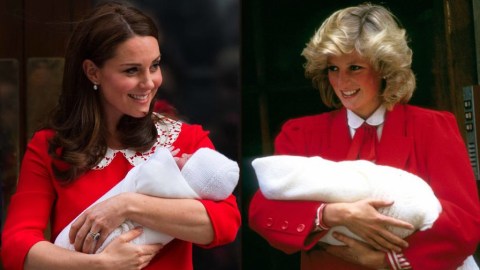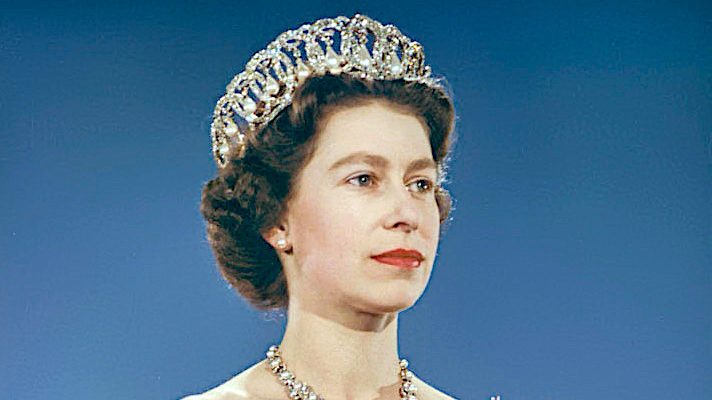UK royal baby: Will England see a King Louis Arthur Charles?

Prince William and Kate Middleton — Catherine, Duchess of Cambridge for the posh and proper among us — have welcomed their third child to the royal family. At 8 pounds, 7 ounces, King Louis Arthur Charles’s arrival was announced to the world with the customary framed notice placed outside of Buckingham Palace, as well as the not-quite-as-customary Monday morning tweet (which happened this time around).
As is usual when a new royal arrives on the scene, people are wondering where the baby will fall in the line of succession to the throne of the United Kingdom. What are the chances that we’ll see the crowning of King Louis Arthur Charles?
A relatively straight line of succession

LONDON, ENGLAND – APRIL 23: Photographers work as Catherine, Duchess of Cambridge and Prince William, Duke of Cambridge, depart the Lindo Wing with their newborn son Prince Louis of Cambridge at St Mary’s Hospital on April 23, 2018, in London, England. The Duchess safely delivered a boy at 11:01 am, weighing 8lbs 7oz, who will be fifth in line to the throne. (Photo by Dan Kitwood/Getty Images)
Thanks to the stability of the modern Monarchy, succession is a far less divisive process today than it used to be.
The current monarch is Queen Elizabeth II. At 92 years old, she has reigned an impressive 66 years, making her tenure the longest in the country’s history. The heir apparent is her firstborn son, Charles, Prince of Wales. Next in line is Charles’s firstborn son, Prince William, Duke of Cambridge. After William comes his and Middleton’s firstborn son, Prince George of Cambridge.
As you can see, the line of succession traditionally follows sons. As Prince George’s younger brother, Louis Arthur Charles would traditionally be fourth in line for the throne, but he’s actually fifth. Here’s where things take a historic turn.
Breaking the habit

Formal portrait of Queen Elizabeth II, Public Domain.
For most of the United Kingdom’s history, daughters were passed over for succession to give preference to sons.
Sure, Britain has had its share of queens; Queen Mary I and Queen Elizabeth I both ascended to the throne in the 16th century. But they only received the position because Henry VIII’s sons, their brothers, died tragically young. His firstborn, Henry, died of an unrecorded disease at the tender age of 52 days. His second born son, Edward VI, became king at the age of 9, but died six years later of tuberculosis. Queen Victoria likewise reigned in no small part thanks to a string of Y-linked bad luck.
Jump forward a few centuries, Parliament finally changed the law to no longer favor gender with the Succession to the Crown Act 20135. This means Princess Charlotte of Cambridge, William and Middleton’s daughter, will retain her place as fourth in line to the throne. To give you an idea of how dated the laws of succession were, this legislation also removed the statute that automatically disqualified someone from the line of succession for marrying a Roman Catholic.
With no cutsies the official law of the land, Louis Arthur Charles will have to settle with fifth in line. If you’re curious, Prince Harry, Louis Arthur Charles’s uncle, is sixth in line, and Prince Andrew, Louis Arthur Charles’s great-uncle and Queen Elizabeth’s second son, is seventh.
So, the chances of Louis Arthur Charles ascending to the throne are pretty slim. With the days of bloody usurpation, rampant plague, and inbred haemophilia6 behind the royal family, he’ll have to make do with being a much-adored prince in one of the oldest and most respected monarchies in the world.
Tough break, kid.
The royal baby’s U.S. counterpart

Flickr, Greg Skidmore: Creative Commons
To add some perspective, Louis Arthur Charles has about as much chance of becoming king as the Secretary of the Treasury has of becoming President of the United States. Like the newborn, the Secretary of the Treasury finds himself behind four others in the line of succession, in order: the Vice President, the Speaker of the House, the President pro tempore of the Senate, and the Secretary of State. The presidential succession is actually mapped all the way down to 17th place, with the Secretary of Homeland Security bringing up the rear. Of course, should that contingency ever come into play, we’ll probably have bigger problems on our hands.)
Still, the comparison isn’t quite apples to regal apples. The President serves as both the head of state and the head of government, while the British Monarch serves only as the head of state. The United Kingdom’s head of government is its Prime Minister, who wields political and executive powers similar to those of the President.
According to the Royal Family’s official website, the Monarch’s duties include constitutional and representational acts and serving “as a focus for national identity, unity, and pride.” The United States simply lacks an individual that performs this kind of role in public life. Well, except maybe Chris Pratt.
With the throne likely out of reach, only time will tell if Louis Arthur Charles becomes the United Kingdom’s Chris Pratt. Given the excitement surrounding announcement of his birth, he’s off to a good start.




